Falling shapes are fun in Drop It
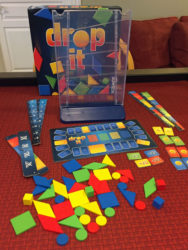
We recently added a puppy to our family and are working on training her. One of the commands we’re trying to teach her is “Drop It”.
Inevitably, she’ll grab something she’s not supposed and we’ll ask her to “drop it”. It’s hit or miss so far, but we’re working on it.
One thing that’s not as tough as training a puppy is a new game by Kosmos called Drop It. Instead, this kind of dropping it is a lot more fun.
In Drop It, players take turns dropping various shapes for points.
That’s right — drop some shapes and score points!
It may not sound like much at first, but you might be surprised just like we have been.
How to play Drop It
Drop It is a super simple game to learn.
As in many games, the objective is to get the most points. Players gain points depending on where their pieces come to rest — the higher level they end on, the more points they’re worth. And if they’re touching special marks, they’ll score bonus points as well.
To begin, each player takes all the shapes in their chosen color. If playing with only two players, both players choose two colors. The cube of their color is placed on the score track.
On a player’s turn, they select one of their wooden pieces and drop it in the game area. Once it comes to rest, the player scores that piece by moving their score marker that many spaces on the score track.
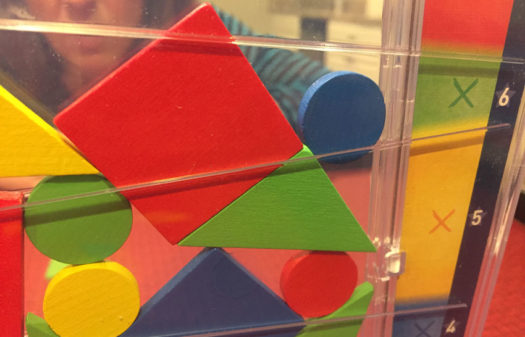
If the piece is touching a piece of the same color or of the same shape, the player doesn’t score any points. Also, if the piece is touching the edge of the board in an area that shows it’s not allowed, it also scores nothing.
Otherwise, the player scores points equal to the highest level the piece comes to rest in. (The game area has lines across it that indicate the levels.)
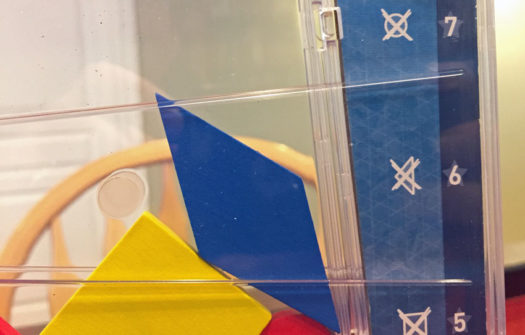
The game area also has three different sizes of circles marked on it. If the piece touches a large circle mark, the player gets 1 bonus point. If it touches a medium circle mark, the player gets 2 bonus points. And if it touches a small circle mark, the player scores 3 bonus points.
Once a player scores points for a piece, it doesn’t matter where it shifts to later from subsequent drops.
Then play moves on to the next player.
Once all players have played all their pieces, the game ends. The player with the highest score wins!
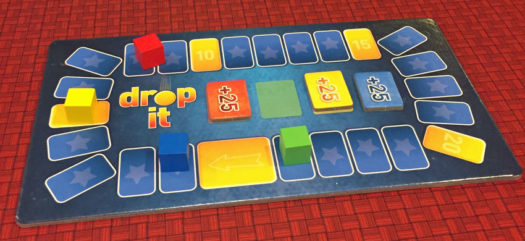
Can the whole family enjoy Drop It?
Drop It is a fantastic game for the whole family to enjoy playing together. As you can see, the rules are very simple. The game all comes down to where the pieces end up after being dropped.
And that’s where the fun is!
You may think you’ve lined up to drop your piece in the perfect spot, but then when it hits, it bounces somewhere else before coming to rest!
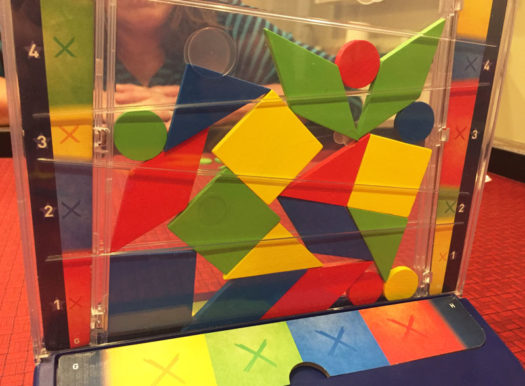
All the pieces below it seem to jump out of the way or cast the new piece off in a strange direction before stopping. So as much as you try to predict, you’ll just have to go with the flow.
And that’s also what makes it a great family game — because anyone can win.
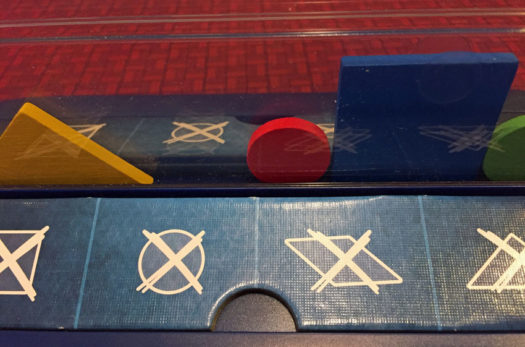
When we first got Drop It, we weren’t sure what to think of the game — mainly because it looked too simple. What could be fun about dropping pieces between two plastic walls?
Well, it turns out we’ve actually had a lot of fun playing — and that’s all with teenagers and above!
We’ve happily discovered that scoring well isn’t as easy as it looks. We’ve found ourselves putting more thought into each drop than we realized we would.
One interesting factor is that the sides of the play area slant outward. This makes it super tough to get a piece to fall down a side — because it can’t. The only hope you have is to get it close enough so that another piece below will tilt so your piece can get to the area you want.
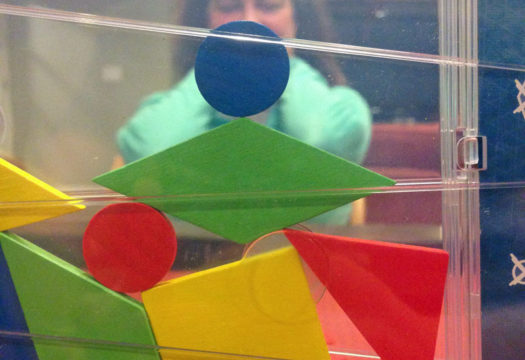
But the biggest “gotcha” is all about what a piece can’t touch.
To do well you need to watch out for matching shapes, matching colors, and edge areas it might end up touching. And you should also consider which pieces you’ll want to play later. Since the pieces you play later will get into the higher scoring levels, you’ll want to make sure they’ll be ones you can score.
Having your last couple pieces not score any points because they touch similar shapes or colors can really derail your scoring when it matters most.
So try to plan ahead (as much as possible).
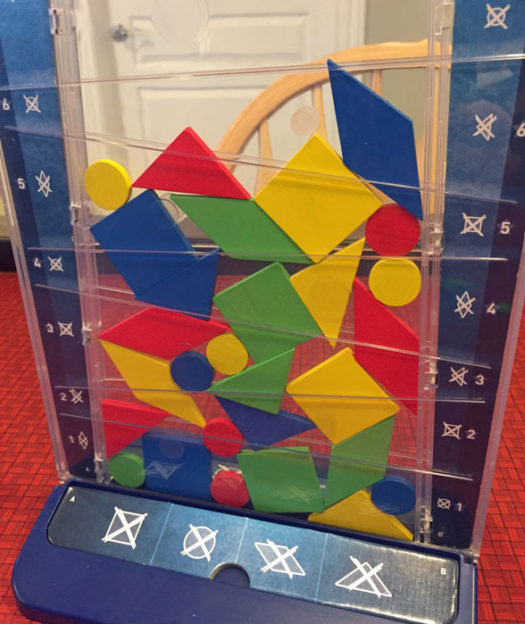
How does Drop It score on our “Let’s Play Again” game meter?
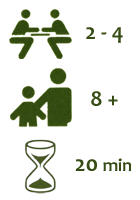 Drop It scores high on our “let’s play again” game meter for a few reasons.
Drop It scores high on our “let’s play again” game meter for a few reasons.
The first reason is that games of Drop It are short. With 2 players, our games average 10 minutes. And with 4 players games aren’t much longer — around 15 minutes.
The second reason is how simple the game is to set up and play again. Just dump out the pieces from the game area, divvy out the color shapes, reset the score markers, and we’re off and playing.
The third reason is perhaps the most important — because we’re having fun.
And that comes down the the interplay between thinking we’ve got skill and the luck of the shifting pieces. We’re always sure next time we’ll do better.
If you’re looking for a quick, light, and colorful game your whole family can enjoy playing together, grab a copy of Drop It.




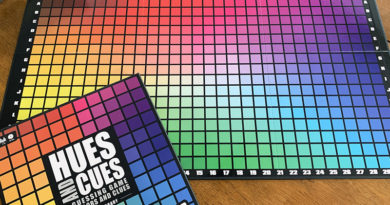
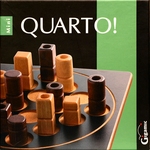
Thanks for the review. It looks fun! It strikes me as something our 2-year-old could easily play along with too. Even without thinking about scoring she’d have a blast playing blocks with the family.
Ryan – Kids that age definitely prefer tactile games where they’re encouraged to play with the pieces. And the colorful nature of the game is another great attraction for that age.